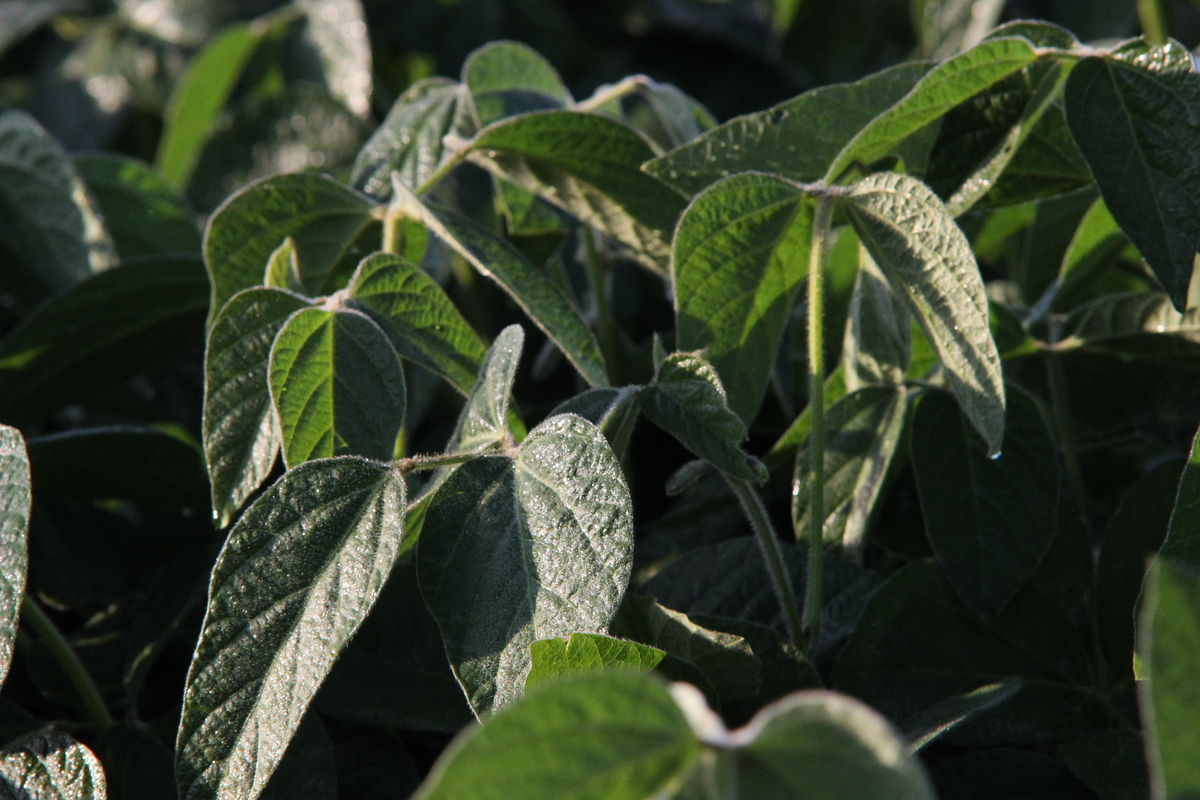For soybean growers, hidden cost of climate change tops $11 billion

Soybeans at the UW Spooner Agricultural Research Station. Courtesy UW–Madison CALS.
Listen to Shawn Conley talk about this story.
Even during a good year, soybean farmers nationwide are, in essence, taking a loss. That’s because changes in weather patterns have been eating into their profits and taking quite a bite: $11 billion over the past 20 years.
This massive loss has been hidden, in effect, by the impressive annual growth seen in soybean yields thanks to other factors. But that growth could have been 30 percent higher if weather variations resulting from climate change had not occurred, according to a study by University of Wisconsin–Madison agronomists published last month in Nature Plants.
“We are still making yield gains because of breeding and other strategies, but those numbers aren’t as big as they could be,” says lead author Shawn Conley, a UW–Madison agronomy professor and UW-Extension soybean and wheat specialist.
Averaging the data across the United States, researchers found that soybean yields fell by around 2.4 percent for every one-degree rise in temperature. In Wisconsin and most other northern states, including South Dakota and Minnesota, the changes in climate factors actually led to higher soybean yields. Wisconsin, for instance, saw an increase of 17.5 kilograms per hectare per year over the 20 years studied. However, most soybean-growing states farther south, including Ohio, Arkansas and Kentucky, experienced decreases in yields.
These divergent responses have to do with historical norms. In colder northern states, soybeans seem to be enjoying the new warmer weather, while in states farther south — where conditions had previously been fairly ideal — the additional heat is causing stress.
Conley’s team isolated the impacts of changing temperature and precipitation on soybean yields in a much more precise way than previously done. While earlier approaches relied on estimates, UW–Madison researchers gathered their own data field trials, giving them access to more reliable and consistent information about the genetics of the soybeans being grown, the management practices being used and the weather the fields saw throughout the growing season. Spyridon Mourtzinis, a post-doctoral fellow in Conley’s lab, then removed the effects of the management strategies and genetic improvements so the team could focus their analysis on the impacts of weather variability.
Because the states with the biggest yield losses are also the nation’s biggest soybean producers, the national impact comes out to a 30 percent yield loss overall.
Conley says that the next step is to help growers minimize this loss by starting or expanding practices such as earlier planting, no-till practices and growing later maturing soybeans. Researchers can help by producing region-specific suggestions that account for weather patterns at different times of the growing season.
Only then, says Conley, can the full potential of soybean yields be realized.
—Caroline Schneider




